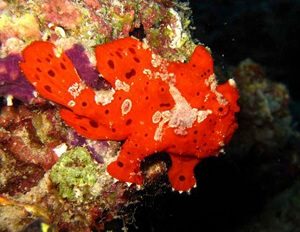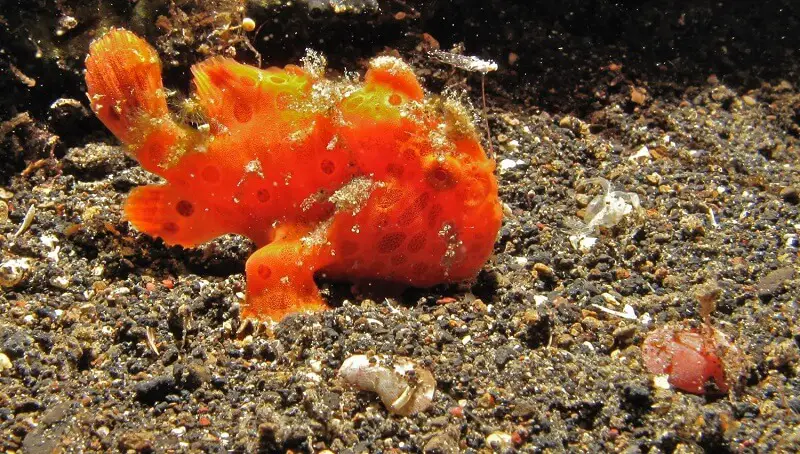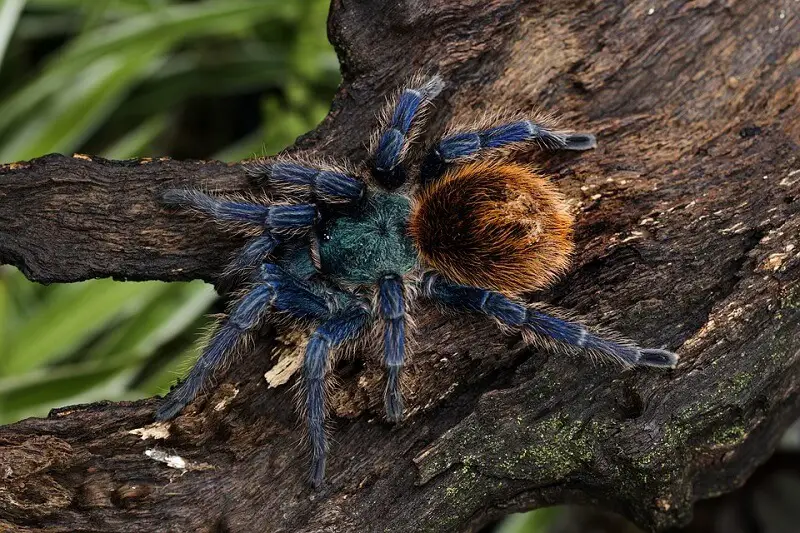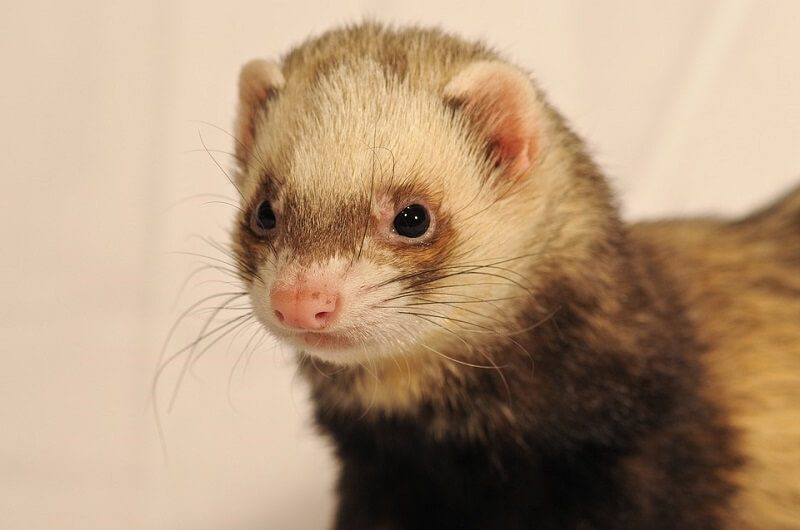Frogfish is a species of the family Antennariidae and are generally found in tropical or subtropical oceans and seas. It is characterized by its camouflage resembling corals, sponges, or other animals, having large globe-shaped heads, a characteristic spine, and an Appendix above the mouth, which serves to quickly catch its prey.
Origins
The frogfish, Antennariidae maculatus, is an inhabitant of warm seas, but sometimes it also can also be found at the mouths of rivers. It is commonly found on the western shores of the Pacific Ocean and the Indian Ocean, in the Maldives, and Mauritius, but also in the Indonesian Archipelago, the Philippines, and the Solomon Islands.
This fish is part of the order anglerfish, which is distinguished by its unusual appearance, but always beautiful and interesting. Although most anglerfish live at great depths, frogfish appear in shallow waters, at depths of about 12-15 m. They prefer to sit on the bottom of the smooth water or between rocks and seabed, in coral reefs, at small depths.
Frogfish General Description
It has a rough body that is only slightly elongated, with the skin covered by scales, and can be about 11,5 cm long. The mouth is very large and prominent. The dorsal loafer is laid on its surface with a long spin, which is finished with a colored skin fin, The last one has the role of nada, which the frogfish always agitates to resemble a small fish and thus attract prey.
Color
The color of this fish is white, brown, cream, or yellow with different spots and black, red, brown, and rust points on the entire body surface, which perfectly camouflages it among the coral. Sometimes it can be confused with the bottom of the water. Its tail fin has two almost symmetrical lobes that help it move, but most of the time it stays hidden among the corals because its massive, heavy body makes it more inactive.
Feeding with a lethal attack
It has a method of feeding that makes it consume very little energy, using its nada to attract its prey to its mouth. When the prey is close enough, it opens the mouth wide and creates a current that absorbs it. Both the mouth and stomach are extensible, so this fish swallows smoothly and also whole, larger fish.
You might also like my articles on coy fish, minnows, or crowntail betta fish.
The strategy is this: The prey approaches the frogfish, as their high camouflage capability allows them to pass unnoticed, and immediately they begin to move the Appendix to attract their victims.
This extension has the shape of an antenna, which gives it the name of the family of fish that all frogfish belong to. Specialists say they use it as if it were a fishing rod, so in some places, locals refer to these fish as “fishing fish”.
 Frogfish pretend to be coral, sponges, or other animals to deceive their prey and swallow them in a split second.
Frogfish pretend to be coral, sponges, or other animals to deceive their prey and swallow them in a split second.
Frogfish feed on crustaceans and various types of fish, including other frogfish. Sometimes the prey is twice as large as they are and yet they manage to swallow it all at once, due to the fact that their mouth can quickly expand to a size twelve times larger than usual.
Frogfish only need six seconds to grab their prey, making them one of the fastest predators in the animal world.
The frogfish is part of the order Lophiiformes, the family Antennariidae, and is not a species in danger of extinction.
Frogfish also differ from other fish as their bodies are not covered with scales, but with a kind of warts and other irregular shapes that allow predators to confuse them with corals or sponges, among other sea creatures.
Another characteristic feature of these fish is that they do not have a swim bladder, which is an air-filled sacciform organ located above the digestive tract and below the spine in bonefish, with hydrostatic function.
Frogfish do not have this organ for two reasons:
- Because they are bentonics, they live on the seabed, so floating is not their priority.
- Because they have pectoral fins adapted so that they can “walk” on the bottom of the water instead of swimming.
This latter feature makes them look very clumsy in their movements, although this does not pose them any problem when hunting.
Most species belonging to the Antennariidae family are found in the Indo-Pacific region, the Philippines, and Indonesia.




